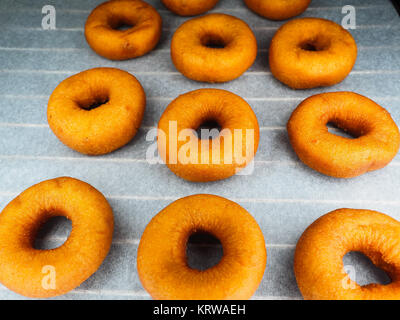 Closeup of freshly made dark brown doughnuts on baking paper Stock Photohttps://www.alamy.com/image-license-details/?v=1https://www.alamy.com/stock-image-closeup-of-freshly-made-dark-brown-doughnuts-on-baking-paper-169587449.html
Closeup of freshly made dark brown doughnuts on baking paper Stock Photohttps://www.alamy.com/image-license-details/?v=1https://www.alamy.com/stock-image-closeup-of-freshly-made-dark-brown-doughnuts-on-baking-paper-169587449.htmlRFKRWAEH–Closeup of freshly made dark brown doughnuts on baking paper
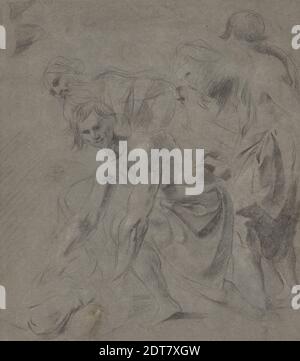 Artist: Giovanni Battista Caracciolo, called Il Battistello, Italian, 1578–1635, Compositional Study, ca. 1616–20, Black and white chalk with touches of red chalk on blue paper, sheet: 30.8 × 35.6 cm (12 1/8 × 14 in.), Working in Naples, Giovanni Battista Caracciolo was one of the first artists to adopt the figural style and shadowy compositions of Caravaggio after the latter arrived in the city in 1606. Unlike Caravaggio, however, who is reputed never to have made preparatory drawings, Caracciolo continued to draw, following the practice that he learned from his first master, Belisario Stock Photohttps://www.alamy.com/image-license-details/?v=1https://www.alamy.com/artist-giovanni-battista-caracciolo-called-il-battistello-italian-15781635-compositionalstudy-ca161620-black-and-white-chalk-with-touches-of-red-chalk-on-blue-paper-sheet-308-356-cm-12-18-14in-working-in-naples-giovanni-battista-caracciolo-was-one-of-the-first-artists-to-adopt-the-figural-style-and-shadowy-compositions-of-caravaggio-after-the-latter-arrived-in-the-city-in-1606-unlike-caravaggio-however-who-is-reputed-never-to-have-made-preparatory-drawings-caracciolo-continued-to-draw-following-the-practice-that-he-learned-from-his-first-master-belisario-image393554361.html
Artist: Giovanni Battista Caracciolo, called Il Battistello, Italian, 1578–1635, Compositional Study, ca. 1616–20, Black and white chalk with touches of red chalk on blue paper, sheet: 30.8 × 35.6 cm (12 1/8 × 14 in.), Working in Naples, Giovanni Battista Caracciolo was one of the first artists to adopt the figural style and shadowy compositions of Caravaggio after the latter arrived in the city in 1606. Unlike Caravaggio, however, who is reputed never to have made preparatory drawings, Caracciolo continued to draw, following the practice that he learned from his first master, Belisario Stock Photohttps://www.alamy.com/image-license-details/?v=1https://www.alamy.com/artist-giovanni-battista-caracciolo-called-il-battistello-italian-15781635-compositionalstudy-ca161620-black-and-white-chalk-with-touches-of-red-chalk-on-blue-paper-sheet-308-356-cm-12-18-14in-working-in-naples-giovanni-battista-caracciolo-was-one-of-the-first-artists-to-adopt-the-figural-style-and-shadowy-compositions-of-caravaggio-after-the-latter-arrived-in-the-city-in-1606-unlike-caravaggio-however-who-is-reputed-never-to-have-made-preparatory-drawings-caracciolo-continued-to-draw-following-the-practice-that-he-learned-from-his-first-master-belisario-image393554361.htmlRM2DT7XGW–Artist: Giovanni Battista Caracciolo, called Il Battistello, Italian, 1578–1635, Compositional Study, ca. 1616–20, Black and white chalk with touches of red chalk on blue paper, sheet: 30.8 × 35.6 cm (12 1/8 × 14 in.), Working in Naples, Giovanni Battista Caracciolo was one of the first artists to adopt the figural style and shadowy compositions of Caravaggio after the latter arrived in the city in 1606. Unlike Caravaggio, however, who is reputed never to have made preparatory drawings, Caracciolo continued to draw, following the practice that he learned from his first master, Belisario
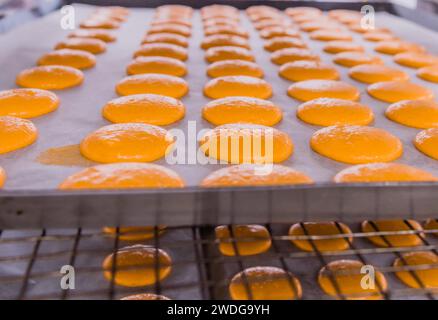 Orange cookies on white paper cooling on aluminum cookie sheet Stock Photohttps://www.alamy.com/image-license-details/?v=1https://www.alamy.com/orange-cookies-on-white-paper-cooling-on-aluminum-cookie-sheet-image593502101.html
Orange cookies on white paper cooling on aluminum cookie sheet Stock Photohttps://www.alamy.com/image-license-details/?v=1https://www.alamy.com/orange-cookies-on-white-paper-cooling-on-aluminum-cookie-sheet-image593502101.htmlRF2WDG9YH–Orange cookies on white paper cooling on aluminum cookie sheet
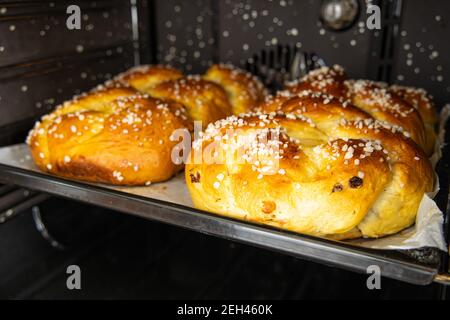 Typical traditional Austria: 2 Allerheiligenstriezel on a tin sheet and paper are finished in the open cooker Stock Photohttps://www.alamy.com/image-license-details/?v=1https://www.alamy.com/typical-traditional-austria-2-allerheiligenstriezel-on-a-tin-sheet-and-paper-are-finished-in-the-open-cooker-image406380147.html
Typical traditional Austria: 2 Allerheiligenstriezel on a tin sheet and paper are finished in the open cooker Stock Photohttps://www.alamy.com/image-license-details/?v=1https://www.alamy.com/typical-traditional-austria-2-allerheiligenstriezel-on-a-tin-sheet-and-paper-are-finished-in-the-open-cooker-image406380147.htmlRF2EH460K–Typical traditional Austria: 2 Allerheiligenstriezel on a tin sheet and paper are finished in the open cooker
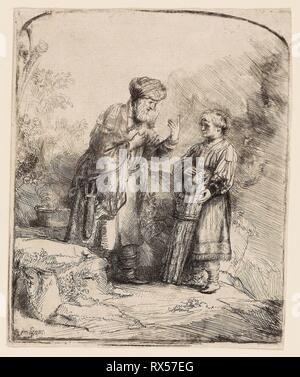 Abraham and Isaac. Rembrandt van Rijn; Dutch, 1606-1669. Date: 1645. Dimensions: 156 x 128 mm (image/plate); 159 x 131 mm (sheet). Etching and drypoint on white laid paper. Origin: Holland. Museum: The Chicago Art Institute. Author: REMBRANDT HARMENSZOON VAN RIJN. Stock Photohttps://www.alamy.com/image-license-details/?v=1https://www.alamy.com/abraham-and-isaac-rembrandt-van-rijn-dutch-1606-1669-date-1645-dimensions-156-x-128-mm-imageplate-159-x-131-mm-sheet-etching-and-drypoint-on-white-laid-paper-origin-holland-museum-the-chicago-art-institute-author-rembrandt-harmenszoon-van-rijn-image239831496.html
Abraham and Isaac. Rembrandt van Rijn; Dutch, 1606-1669. Date: 1645. Dimensions: 156 x 128 mm (image/plate); 159 x 131 mm (sheet). Etching and drypoint on white laid paper. Origin: Holland. Museum: The Chicago Art Institute. Author: REMBRANDT HARMENSZOON VAN RIJN. Stock Photohttps://www.alamy.com/image-license-details/?v=1https://www.alamy.com/abraham-and-isaac-rembrandt-van-rijn-dutch-1606-1669-date-1645-dimensions-156-x-128-mm-imageplate-159-x-131-mm-sheet-etching-and-drypoint-on-white-laid-paper-origin-holland-museum-the-chicago-art-institute-author-rembrandt-harmenszoon-van-rijn-image239831496.htmlRMRX57EG–Abraham and Isaac. Rembrandt van Rijn; Dutch, 1606-1669. Date: 1645. Dimensions: 156 x 128 mm (image/plate); 159 x 131 mm (sheet). Etching and drypoint on white laid paper. Origin: Holland. Museum: The Chicago Art Institute. Author: REMBRANDT HARMENSZOON VAN RIJN.
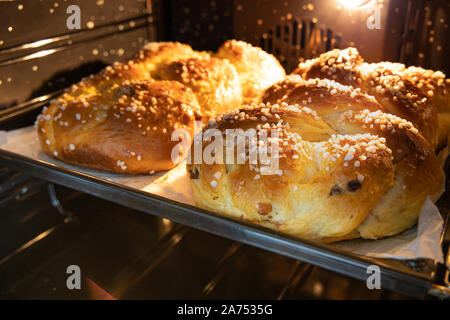 Typical traditional Austria: 2 Allerheiligenstriezel on a tin sheet and paper are ready in the open stove Stock Photohttps://www.alamy.com/image-license-details/?v=1https://www.alamy.com/typical-traditional-austria-2-allerheiligenstriezel-on-a-tin-sheet-and-paper-are-ready-in-the-open-stove-image331411852.html
Typical traditional Austria: 2 Allerheiligenstriezel on a tin sheet and paper are ready in the open stove Stock Photohttps://www.alamy.com/image-license-details/?v=1https://www.alamy.com/typical-traditional-austria-2-allerheiligenstriezel-on-a-tin-sheet-and-paper-are-ready-in-the-open-stove-image331411852.htmlRF2A7535G–Typical traditional Austria: 2 Allerheiligenstriezel on a tin sheet and paper are ready in the open stove
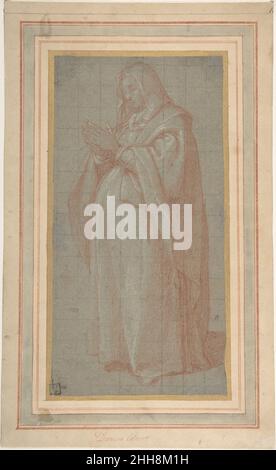 Standing Pregnant Woman (Study for the Pregnant Virgin Mary) 1556–1629 Bartolomeo Cesi Italian Traditionally attributed to Denys Calvaert – as recorded on the mount by an elegant inscription of Jonathan Richardson Sr. (1667–1745) – this drawing is a typical example of the chalk draughtsmanship of Bartolomeo Cesi, a leading artist of the Bolognese scene during the age of the Counter Reformation in the late sixteenth century. Drawn in red and white chalks on blue paper, this sheet is in fact a study for the ‘Pregnant Virgin Mary ’, originally frescoed by Cesi in the Manzoli (or Manzuoli) altar o Stock Photohttps://www.alamy.com/image-license-details/?v=1https://www.alamy.com/standing-pregnant-woman-study-for-the-pregnant-virgin-mary-15561629-bartolomeo-cesi-italian-traditionally-attributed-to-denys-calvaert-as-recorded-on-the-mount-by-an-elegant-inscription-of-jonathan-richardson-sr-16671745-this-drawing-is-a-typical-example-of-the-chalk-draughtsmanship-of-bartolomeo-cesi-a-leading-artist-of-the-bolognese-scene-during-the-age-of-the-counter-reformation-in-the-late-sixteenth-century-drawn-in-red-and-white-chalks-on-blue-paper-this-sheet-is-in-fact-a-study-for-the-pregnant-virgin-mary-originally-frescoed-by-cesi-in-the-manzoli-or-manzuoli-altar-o-image458110061.html
Standing Pregnant Woman (Study for the Pregnant Virgin Mary) 1556–1629 Bartolomeo Cesi Italian Traditionally attributed to Denys Calvaert – as recorded on the mount by an elegant inscription of Jonathan Richardson Sr. (1667–1745) – this drawing is a typical example of the chalk draughtsmanship of Bartolomeo Cesi, a leading artist of the Bolognese scene during the age of the Counter Reformation in the late sixteenth century. Drawn in red and white chalks on blue paper, this sheet is in fact a study for the ‘Pregnant Virgin Mary ’, originally frescoed by Cesi in the Manzoli (or Manzuoli) altar o Stock Photohttps://www.alamy.com/image-license-details/?v=1https://www.alamy.com/standing-pregnant-woman-study-for-the-pregnant-virgin-mary-15561629-bartolomeo-cesi-italian-traditionally-attributed-to-denys-calvaert-as-recorded-on-the-mount-by-an-elegant-inscription-of-jonathan-richardson-sr-16671745-this-drawing-is-a-typical-example-of-the-chalk-draughtsmanship-of-bartolomeo-cesi-a-leading-artist-of-the-bolognese-scene-during-the-age-of-the-counter-reformation-in-the-late-sixteenth-century-drawn-in-red-and-white-chalks-on-blue-paper-this-sheet-is-in-fact-a-study-for-the-pregnant-virgin-mary-originally-frescoed-by-cesi-in-the-manzoli-or-manzuoli-altar-o-image458110061.htmlRM2HH8M1H–Standing Pregnant Woman (Study for the Pregnant Virgin Mary) 1556–1629 Bartolomeo Cesi Italian Traditionally attributed to Denys Calvaert – as recorded on the mount by an elegant inscription of Jonathan Richardson Sr. (1667–1745) – this drawing is a typical example of the chalk draughtsmanship of Bartolomeo Cesi, a leading artist of the Bolognese scene during the age of the Counter Reformation in the late sixteenth century. Drawn in red and white chalks on blue paper, this sheet is in fact a study for the ‘Pregnant Virgin Mary ’, originally frescoed by Cesi in the Manzoli (or Manzuoli) altar o
 Hand holding a Rubber stamp and blank paper on wooden table. White background. Copy space Stock Photohttps://www.alamy.com/image-license-details/?v=1https://www.alamy.com/hand-holding-a-rubber-stamp-and-blank-paper-on-wooden-table-white-background-copy-space-image612418542.html
Hand holding a Rubber stamp and blank paper on wooden table. White background. Copy space Stock Photohttps://www.alamy.com/image-license-details/?v=1https://www.alamy.com/hand-holding-a-rubber-stamp-and-blank-paper-on-wooden-table-white-background-copy-space-image612418542.htmlRF2XGA22P–Hand holding a Rubber stamp and blank paper on wooden table. White background. Copy space
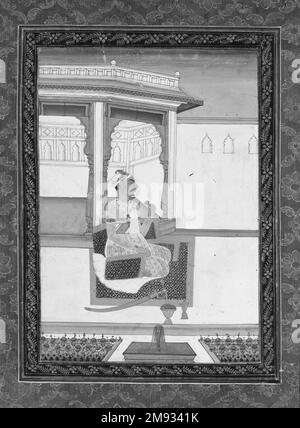 Chandhu La'l Indian. Chandhu La'l, 1875-1900. Opaque watercolor and gold on paper, sheet: 19 11/16 x 11 13/16 in. (50.0 x 30.0 cm). This portrait depicts a courtier who served the nizam (ruler) of Hyderabad in the early nineteenth century. In a composition that was typical of the period, Chandhu Lal is depicted seated on a carpet, surrounded by cushions, and holding a flower, with his sword lying before him. He wears the thin white cotton coat that was standard attire for aristocrats in India, and an impressive turban ornament, or sarpech, with pendant emeralds, probably a gift from the nizam Stock Photohttps://www.alamy.com/image-license-details/?v=1https://www.alamy.com/chandhu-lal-indian-chandhu-lal-1875-1900-opaque-watercolor-and-gold-on-paper-sheet-19-1116-x-11-1316-in-500-x-300-cm-this-portrait-depicts-a-courtier-who-served-the-nizam-ruler-of-hyderabad-in-the-early-nineteenth-century-in-a-composition-that-was-typical-of-the-period-chandhu-lal-is-depicted-seated-on-a-carpet-surrounded-by-cushions-and-holding-a-flower-with-his-sword-lying-before-him-he-wears-the-thin-white-cotton-coat-that-was-standard-attire-for-aristocrats-in-india-and-an-impressive-turban-ornament-or-sarpech-with-pendant-emeralds-probably-a-gift-from-the-nizam-image504701615.html
Chandhu La'l Indian. Chandhu La'l, 1875-1900. Opaque watercolor and gold on paper, sheet: 19 11/16 x 11 13/16 in. (50.0 x 30.0 cm). This portrait depicts a courtier who served the nizam (ruler) of Hyderabad in the early nineteenth century. In a composition that was typical of the period, Chandhu Lal is depicted seated on a carpet, surrounded by cushions, and holding a flower, with his sword lying before him. He wears the thin white cotton coat that was standard attire for aristocrats in India, and an impressive turban ornament, or sarpech, with pendant emeralds, probably a gift from the nizam Stock Photohttps://www.alamy.com/image-license-details/?v=1https://www.alamy.com/chandhu-lal-indian-chandhu-lal-1875-1900-opaque-watercolor-and-gold-on-paper-sheet-19-1116-x-11-1316-in-500-x-300-cm-this-portrait-depicts-a-courtier-who-served-the-nizam-ruler-of-hyderabad-in-the-early-nineteenth-century-in-a-composition-that-was-typical-of-the-period-chandhu-lal-is-depicted-seated-on-a-carpet-surrounded-by-cushions-and-holding-a-flower-with-his-sword-lying-before-him-he-wears-the-thin-white-cotton-coat-that-was-standard-attire-for-aristocrats-in-india-and-an-impressive-turban-ornament-or-sarpech-with-pendant-emeralds-probably-a-gift-from-the-nizam-image504701615.htmlRM2M9341K–Chandhu La'l Indian. Chandhu La'l, 1875-1900. Opaque watercolor and gold on paper, sheet: 19 11/16 x 11 13/16 in. (50.0 x 30.0 cm). This portrait depicts a courtier who served the nizam (ruler) of Hyderabad in the early nineteenth century. In a composition that was typical of the period, Chandhu Lal is depicted seated on a carpet, surrounded by cushions, and holding a flower, with his sword lying before him. He wears the thin white cotton coat that was standard attire for aristocrats in India, and an impressive turban ornament, or sarpech, with pendant emeralds, probably a gift from the nizam
 Typical white watercolor paper background Stock Photohttps://www.alamy.com/image-license-details/?v=1https://www.alamy.com/typical-white-watercolor-paper-background-image462500136.html
Typical white watercolor paper background Stock Photohttps://www.alamy.com/image-license-details/?v=1https://www.alamy.com/typical-white-watercolor-paper-background-image462500136.htmlRF2HTCKJ0–Typical white watercolor paper background
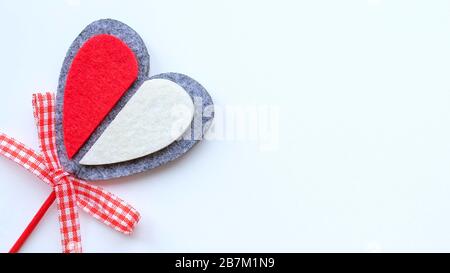 Valentine's day background. Bright heart on a sheet of white paper. Stock Photohttps://www.alamy.com/image-license-details/?v=1https://www.alamy.com/valentines-day-background-bright-heart-on-a-sheet-of-white-paper-image348950373.html
Valentine's day background. Bright heart on a sheet of white paper. Stock Photohttps://www.alamy.com/image-license-details/?v=1https://www.alamy.com/valentines-day-background-bright-heart-on-a-sheet-of-white-paper-image348950373.htmlRF2B7M1N9–Valentine's day background. Bright heart on a sheet of white paper.
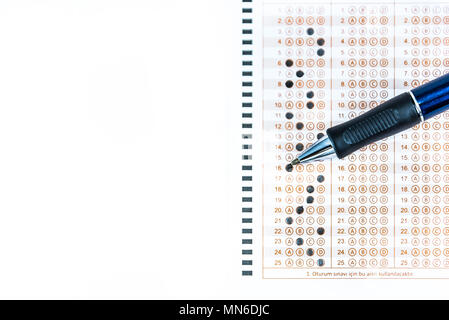 Pencil over filled typical multiple choice answer sheet.copy space for text. Stock Photohttps://www.alamy.com/image-license-details/?v=1https://www.alamy.com/pencil-over-filled-typical-multiple-choice-answer-sheetcopy-space-for-text-image185153876.html
Pencil over filled typical multiple choice answer sheet.copy space for text. Stock Photohttps://www.alamy.com/image-license-details/?v=1https://www.alamy.com/pencil-over-filled-typical-multiple-choice-answer-sheetcopy-space-for-text-image185153876.htmlRFMN6DJC–Pencil over filled typical multiple choice answer sheet.copy space for text.